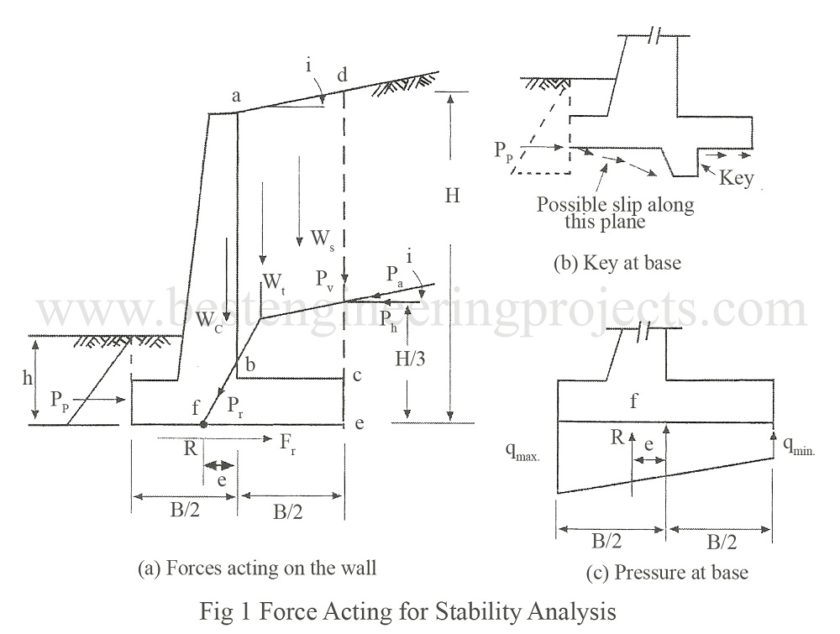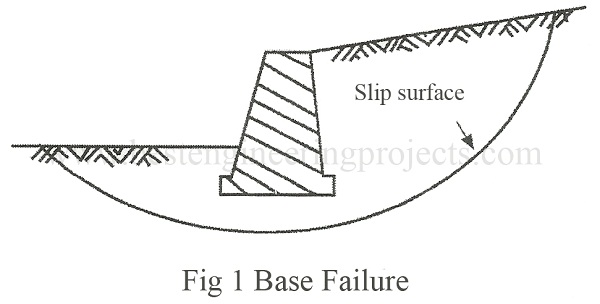Derivation of Stability Analysis for Cantilever Wall
Consider a cantilever wall carrying a sloping backfill as shown in the Fig.1.
The various forces acting on the wall are:
Pa = Active earth pressure acting at a height H/3 from the base on section ed.
Ph = Pa cosi
Pv = Pa sini
Ws = Weight of soil abcd
Wc = weight of wall including base
Wt = the resultant of Ws and Wc
Pt = the resultant of Wt and Pa meeting at f at base of Wall
Pp = Passive earth pressure in front of the Wall
Fr = Base sliding resistance
e = eccentricity
Check against Sliding | Stability Analysis for Cantilever Wall
Force tending to slide the wall = Horizontal force due to back fill,
FD = Pa (h)
The force that resists the movement is:
Where, V = Ws + Wc + Pv
Ca = Unit adhesion between the wall and the soil at base
Factor of safety against sliding,
………..(1)
In case, Fs < 1.5, additional factor of safety can be provided by providing one or two keys at the base as shown in Fig.1(b) above. In case the base is founded on soil of low bearing capacity and the wall happens to be very high, for such cases the only solution is to provide pile foundation to the wall. The passive earth pressure in front of the wall should not be relied upon unless it is certain that soil always remains firm and undisturbed.
Check against overturning | Stability Analysis for Cantilever Wall
For this, moment of all the resisting forces and stabilizing forces are taken about toe. The factor of safety against overturning is therefore:
………(2)
Where, Mr = Resisting Moment
M0 = Overturning Moment
Check against Bearing Capacity Failure
If V is the resultant of all the vertical forces acting at f with an eccentricity e as shown in Fig.1(c). The pressure distribution at the base is trapezoidal with a maximum at toe and minimum at heel.
The intensity of pressure can be calculated by using the relation:
and
……..(3)
The maximum pressure qmax cannot exceed the allowable bearing capacity of the soil. For no tension to develop at base the value of the eccentricity e should not exceed B/6. When, e = B/6, then qmin = 0. When e > B/6, qmin < 0 and tension will be developed and the heel of the wall gets lifted up. This situation should not be allowed to develop.
The depth of foundation provided should be adequate. It should be well below the zone of seasonal change in moisture and the frost. When the soil is of low bearing capacity and it is not practicable to provide large base slab it will be necessary to use a pile foundation to support the base slab which in turn supports the wall.
If the base of soil consists of medium to soft Clay, a circular slip circle may develop as shown in Fig.2. The critical slip surface must be located by trial. Such stability problems may be analyzed either by method of slices or any other methods such as friction circle method.

